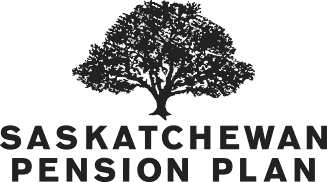Jan. 13: BEST OF THE BLOGOSPHERE
January 13, 2025

Emptying the nest egg – the challenge of finally spending your retirement savings
Our late father was in his early 80s when a financial adviser asked him if he was still saving up for a rainy day. “Yes,” said Dad. “Well,” the adviser said, “it’s raining.”
Many people, like Dad, are reluctant to finally start spending their hard-saved retirement nest egg dollars, reports Ritika Dubey of The Canadian Press.
“It can be a jarring switch from saving for retirement to spending in retirement,” she writes. “Financial experts say that transition is a process.”
Her article quotes Kurt Rosentreter of Manulife Wealth as saying we all need to “psychologically prepare” for retirement and need to start thinking about our retirement spending needs “at least two years before bowing out of the job.”
“It’s not just stop one day and all of a sudden, start living off your savings,” he tells The Canadian Press.
Anyone closing in on retirement needs to know things like your post-retirement “cost of living, tax impacts, and how to live off passive investment income or rental property income for the rest of (their) retired life,” writes Dubey.
And unlike the days of getting handed a paycheque every couple of weeks, retirement income is often a byproduct of investment, the article continues.
“All of a sudden, your food money and everything else — your fund money — is now tied to the stock market, bond market, politics, economics, tax rates,” Rosentreter states in the article. “That’s pretty intimidating.”
For Rosentreter, the answer is developing a written plan ahead of retirement, one that states, “here’s how much you have, here’s how you will access it over the next month, next year, 10 years, the rest of your life,” he tells The Canadian Press.
The plan should look at four key areas, he states in the article – fixed core costs (shelter, utilities), fixed variable costs (birthday gifts, etc.), discretionary expenses (i.e., dining out) and luxury costs (that expensive SUV).
“You start with the mathematics of what their cost of living is,” he tells The Canadian Press. “You can’t head into retirement without the numbers.”
Marlene Buxton of Buxton Financial tells The Canadian Press that you will also have to deal with income from multiple sources – many different pots of income.
You might, she notes in the article, have money in locked-in retirement accounts, registered retirement income funds, a defined benefit pension or tax-free savings.
She says it is not day-to-day spending that depletes your savings – “it’s the larger decisions, such as how long before downsizing or when to begin certain benefits such as the Canada Pension Plan or Old Age Security, or what age to retire,” she states in the article.
The article concludes by saying you need to revisit your cash flow plans every year after you retire and adjust them as required. “In the end, it’s putting all this on a spreadsheet and working with it and moving the numbers back and forth to see where it works based on what starts the conversation,” Rosentreter tells The Canadian Press.
With the Saskatchewan Pension Plan, it’s easy to automate your retirement savings. SPP allows you to make contributions via pre-authorized withdrawals from your bank account.
You can line up the withdrawals with your pay days so that you are saving the money before you even realize it’s there. Alternatively, you can contribute to SPP by setting it up as a “bill” in your bank’s online bill payment section. You can send us a cheque, or you can make a contribution with your credit card! It’s all part of the flexibility of being an SPP member.
Check out SPP today!
Join the Wealthcare Revolution – follow SPP on Facebook!
Written by Martin Biefer

Martin Biefer is Senior Pension Writer at Avery & Kerr Communications in Nepean, Ontario. A veteran reporter, editor and pension communicator, he’s now a freelancer. Interests include golf, line dancing and classic rock, and playing guitar. Got a story idea? Let Martin know via LinkedIn.

Previous Post:
Jan 9: Scammers are out for your money – watch out for these common scams
Next Post:
Jan 16: Resolutions to help you save money in 2025